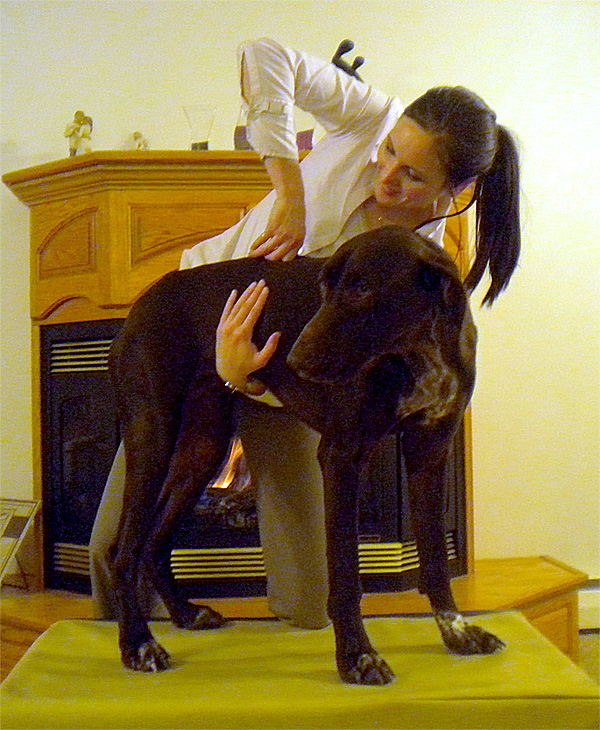Canines can signal to their owners in many ways that they may be in need of an adjustment. Canine breeds are so vast one symptom may be more predominate than others depending on size and breed of the dog. In my experience smaller dogs seem to acquire more structural issues simply because the world is so much bigger than they are. It takes a lot more energy for the smaller breeds to maneuver furniture, steps and keeping up with their beloved owners. Larger breeds tend to have more extremity issues.
Does Your Dog Need Canine Chiropractic Treatment?
Canines are very similar to equine with the exception of the following:
• Puppy sitting or sitting with legs out to one side
• Lick granulomas (licking or itching a spot raw)
• Increased sensitivity to hot or cold
• Incontinence
• Skin lesions and scratching
• Side winding or crabbing
• Partial weakness or paralysis
• Pacing or stiffness coming out of crate or kennel
• Discomfort when taking off or putting on collar and harness
• Head dipping or hollow back
• Change in behavior patterns; fear biting
• Facial expression of apprehension or pain, shaking in pain
Behavioral changes
- Change in behavior patterns
- Fear biting
- Ear shyness
- Head shyness
- Unusual tail rubbing or biting at skin
- Lick granulomas (licking or itching a spot raw)
- Puppy sitting or sitting with legs out to one side
- Shaking in pain
Injuries
- Training
- Falls
- Stressful situations
- Being kenneled for long periods of time
 Gait problems
Gait problems
- Inability to engage rear quarters
- Asymmetrical diagonal movement (short stride, especially side to side)
- Lameness
- Toe dragging
- Stumbling
- Limping
- Cross-firing
- Uneven strides
- Lack of coordination in gaits
- Stiffness in lateral movements of neck or body
- Lameness that seems to shift from limb to limb
- Side winding or crabbing
- Partial weakness or paralysis
- Pacing or stiffness coming out of crate or kennel
- Discomfort when taking off or putting on collar and harness
- Head dipping or hollow back
Performance problems
- Tail swishing
- Head carriage
- Decreased flexion at the neck
- Unable to round up or arc
- Pulls to one direction
- Uses entire body to turn
- Difficulty executing desired movements
- Dominant on one side
- Refusal to turn to one side
- Loss or decrease in level of performance
- Shies away from jumps
Static problems
- Muscle imbalance
- Muscle spasms or atrophy
- Heat in certain areas
- Abnormal sweat patterns
- Digestive disorders
- Standing with hips uneven
- Holds tail to one side
- Head tilt
- Inflammation or swelling over certain areas
- Lack of coordination in gaits
Diagnosed conditions
Such as degenerative arthritis, weak immune system, osteoarthritis, etc.
